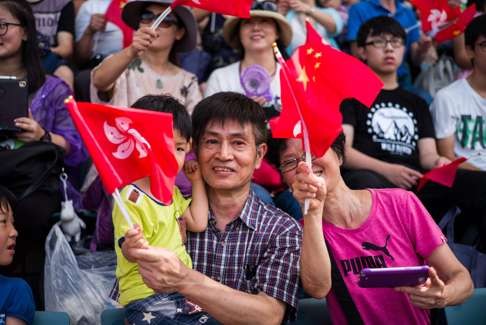
The Women’s Commission report makes it clear: The success of Hong Kong women is built on education
Bernard Chan says changes in the law and in attitudes have obviously played a part in the rising proportion of women in the workforce, but their gains are mainly due to better education
There are various factors that can influence the data. One is gender distribution by age. Put simply, elderly people are on the whole poorer and less educated than the young, and the percentage of elderly people has grown. This can affect male-female comparisons across the population.
Another factor is the inflow of mainland migrants. Some of these are the result of marriage. The trend shows the number of cross-boundary marriages declining – though the number of Hong Kong women marrying mainland men is growing. This seems to be part of a trend in which such unions are becoming less of a grass-roots and more of a middle-class phenomenon.

A quota for women on Hong Kong company boards? No, thanks
One thing that is clear from the report is that women are gaining on men in terms of education. Over the last 10 years or so, Hongkongers of both genders have moved up the education ladder, notably in terms of post-secondary qualifications. As the number of college-level openings has grown, women have consolidated their position in publicly funded programmes. They had some 55 per cent of places some 10 years ago, and now account for around 54 per cent of the much larger number of places.
Despite this, there are major differences in the subjects men and women study. Women account for a clear majority of places in humanities, education, social sciences and business and management. Men account for big majorities – 60-70 per cent – in science, engineering and technology. Only in medicine and dentistry are the ratios about equal.
The overall trend is that women are becoming better educated. This is reflected in employment.
Labour participation rates by sex have not changed greatly in the last 10 years, at about 69 per cent of all men over 15, compared with some 50 per cent of women. But better educated women are working more than their less educated counterparts. This pattern also applies to men, but the effect is higher among women.

Better education for women will cut income inequality, not increase it
In terms of career attainment, women continue to account for large majorities of clerical support, service and sales staff. However, they also occupy a growing percentage of management and professional jobs. This shows up in the data by industry. Women held 40 per cent of financial and business services jobs 10 years ago, but now have 48 per cent. They have made similar gains in other sectors such as transport and communications. The picture is especially vivid in the professions. Women have gone from 43 per cent of accountants to 50 per cent, and from 40 per cent of solicitors to 47 per cent.
While women are making visible progress in school and the workplace, they are not making similar inroads in social and political life
Women throughout the workforce still lag behind men in terms of earnings. In most sectors, however, the gap is narrowing.
While women are making visible progress in school and the workplace, they are not making similar inroads in social and political life. They account for 11 out of 70 Legislative Council members, and 79 out of 431 elected district council members. These ratios have not changed significantly in the last 10 (or indeed 20) years.
The picture is a bit brighter in the senior ranks of government. The percentage of women in directorate levels in the civil service has gone from 26 per cent in 2004 to 34 per cent in 2014. This pattern is repeated on advisory and statutory bodies, where women have gone from having 24 per cent of places to 32 per cent.
These last measurements suggest that there is a long-term trend for women to occupy a larger share of higher positions in public life. There are more female civil servants coming up through the ranks, and this trend should continue.
Women in Hong Kong have struggled to overcome discrimination. The Women’s Commission report shows they are succeeding. It is clear that there is one key driver. It is simple and obvious, but easy to forget that the future success not just of women, but of our whole society, comes down to one thing: education.
Bernard Chan is a member of the Executive Council

